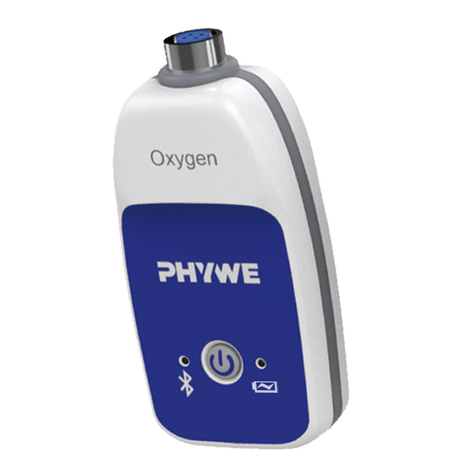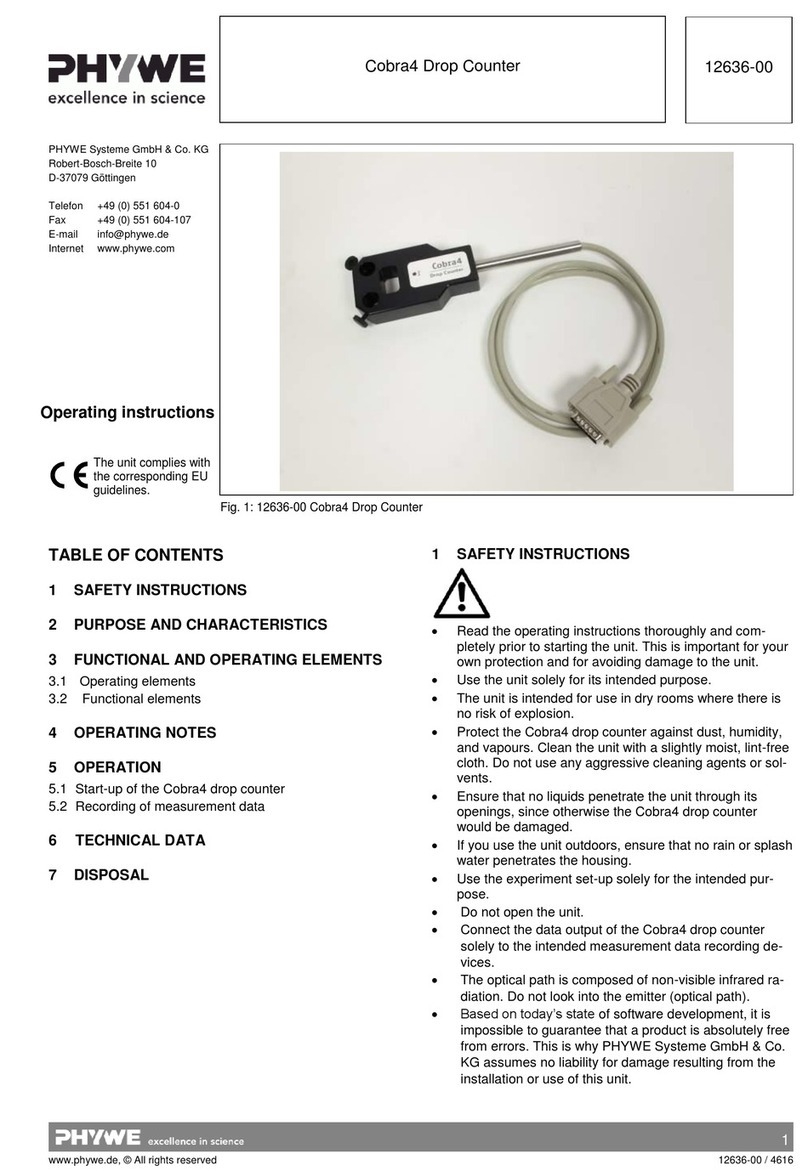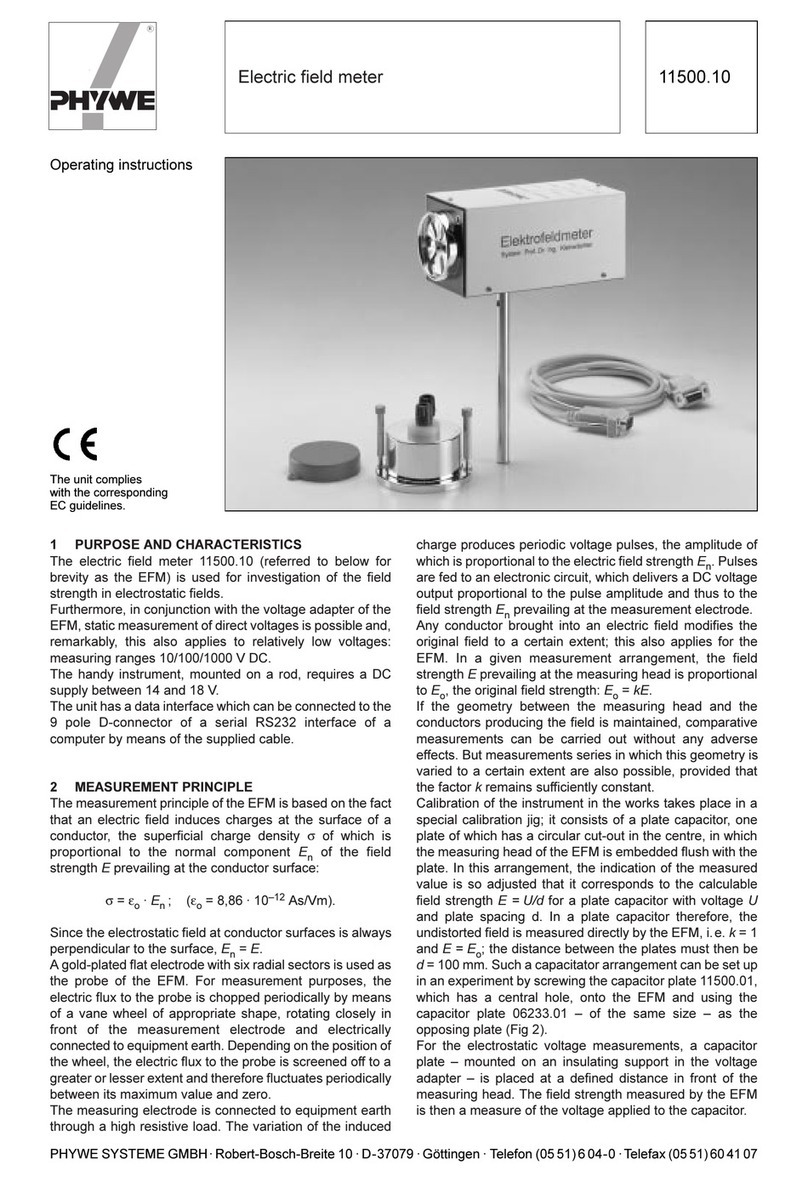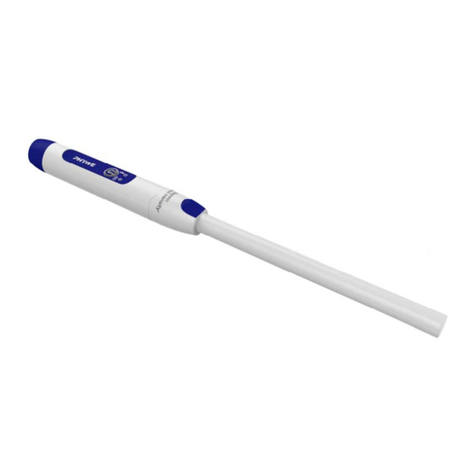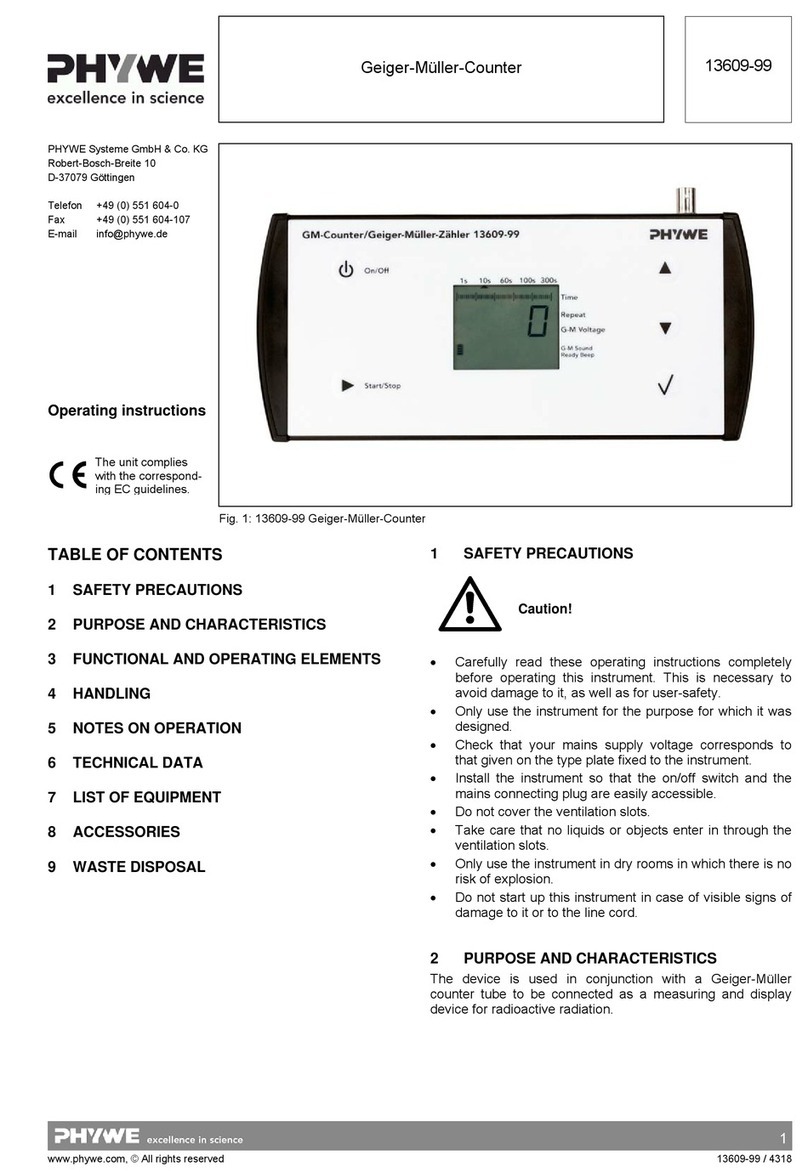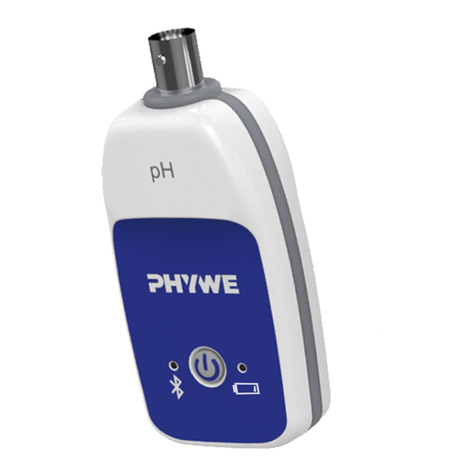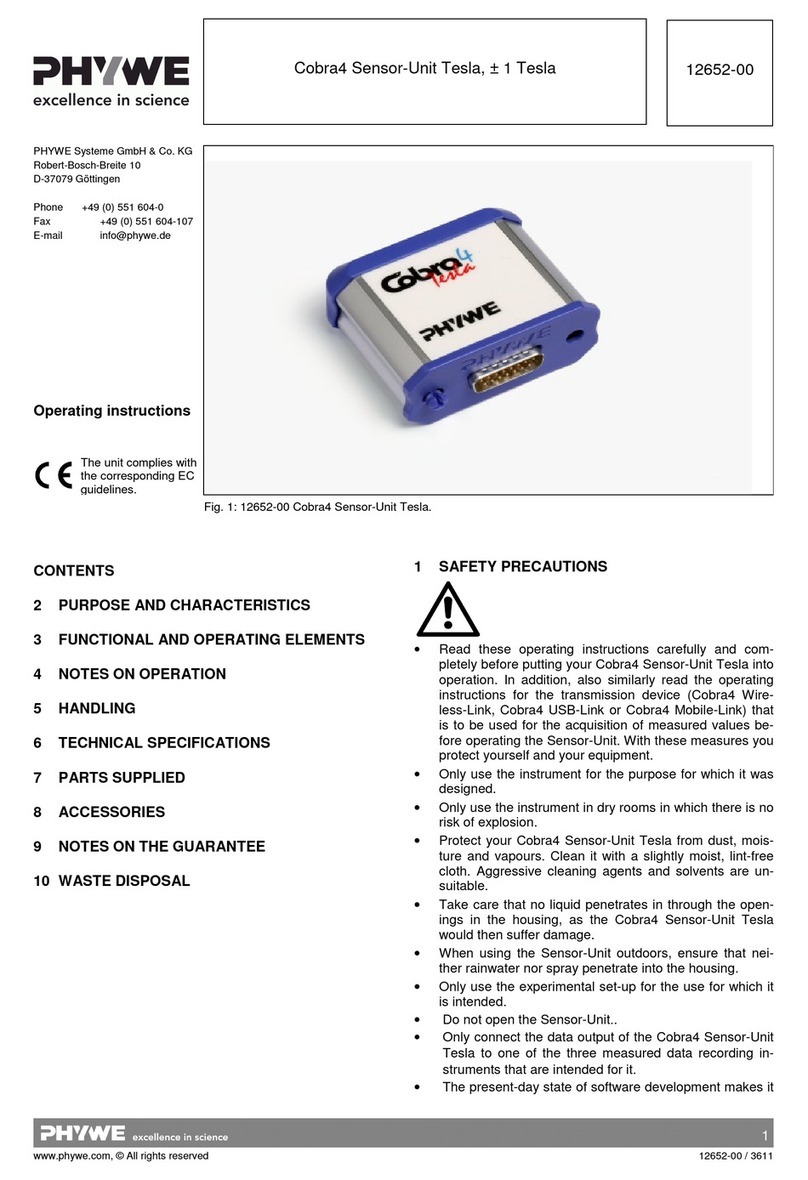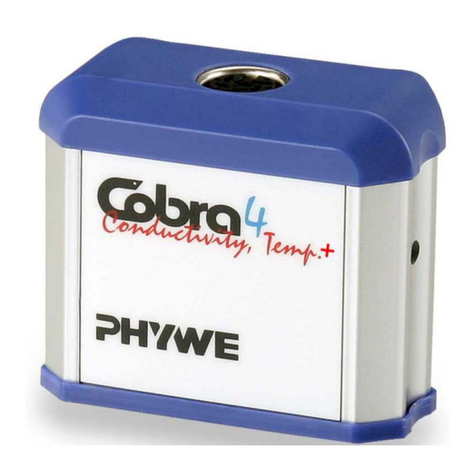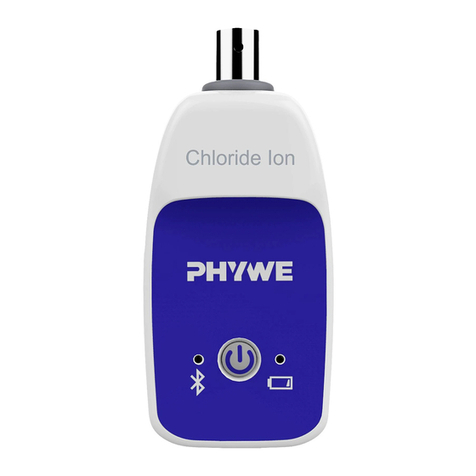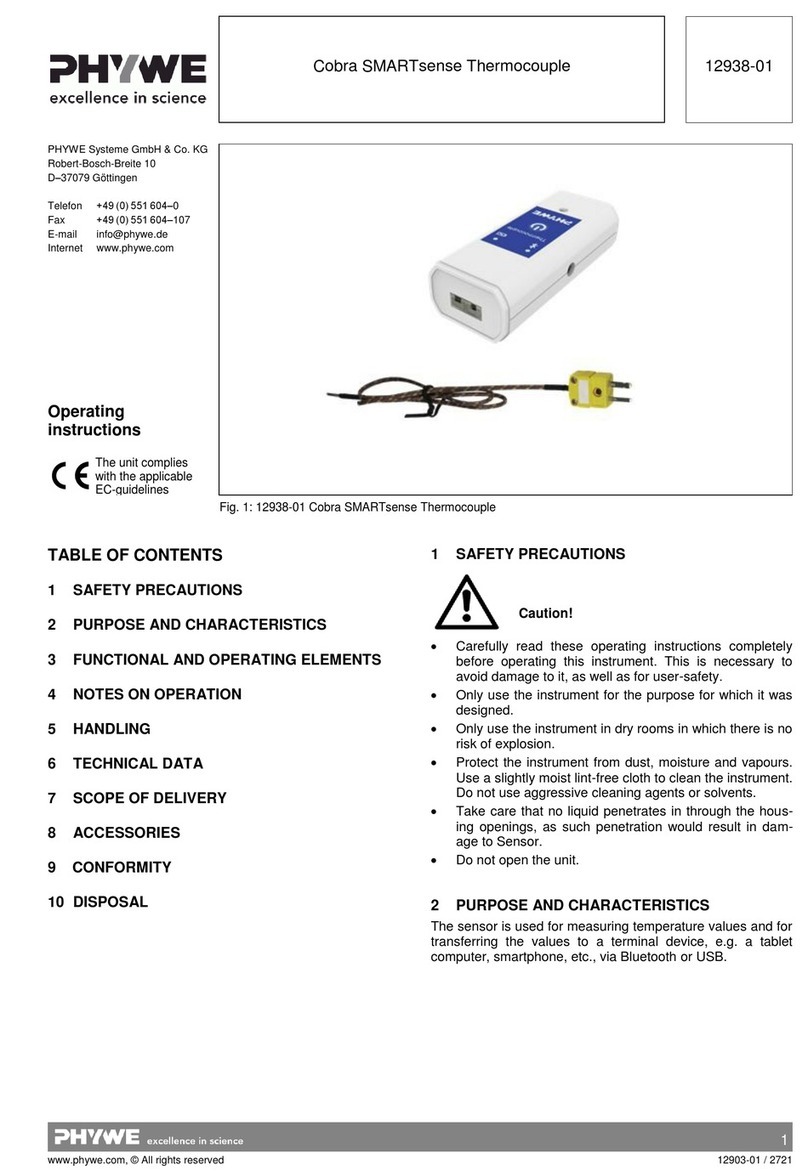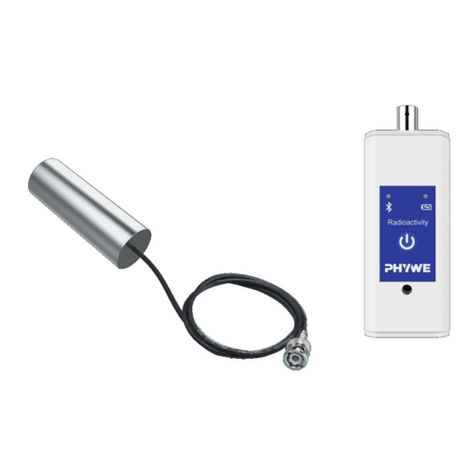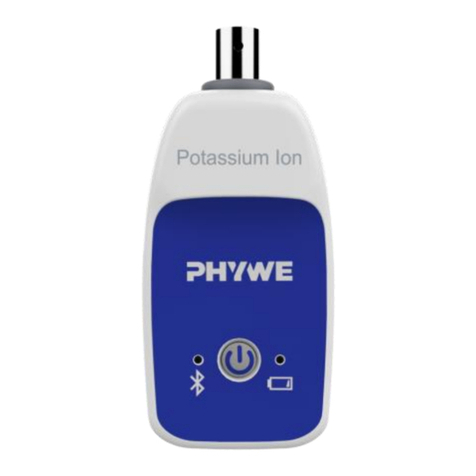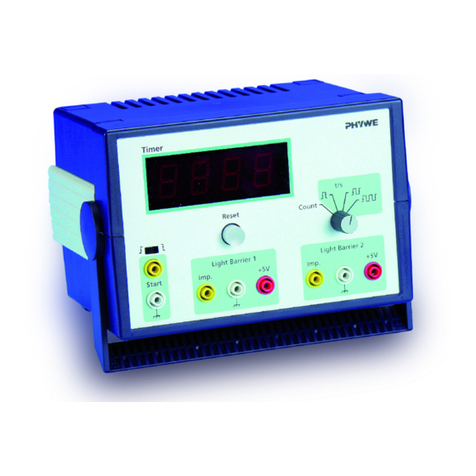3
www.phywe.com, © All rights reserved 12913-00 / 0222
Proceed with the filling as described below:
1 = Diaphragm
2 = Sealing ring
3 = Front cap
4 = Electrode
5 = Outer shell
Fig.5
Unscrew the outer cover (5)
from the electrode (4) and
then also unscrew the front
cap (3) from the outer cover
(5).
Now check that the dia-
phragm (1) and the sealing
ring (2) are correctly seated.
The sealing ring must not be
twisted or inserted crookedly.
Fig.6
Now screw the front cap with inserted diaphragm and sealing
ring onto the outer casing(5) again.
Then carefully fill 7-8 ml of conductive liquid into the outer
casing(5) using the enclosed syringe.
Fig. 7
Now carefully push the electrode into the filled outer casing
and then turn the electrode with the outer casing (hand-tight).
ATTENTION: Please do not use any tool to tighten. This
may destroy the electrode or tear the membrane.
5.3 Activating the electrode
If the electrode is used for the first time or has not been used
for more than 1 week, it must be immersed in the activation
solution for 24 hours before use. Make sure that the lower
part of the electrode does not rest on the bottom of the con-
tainer, as this may damage the membrane. Then rinse the
electrode in deionised water.
The electrode can be stored permanently in the activation
solution.
Preparation of the activation solution:
1 M NH4Cl (one-molar ammonium chloride solution) and H20
deionised are required as stock solutions.
The concentration of the activation solution should be 10mM
NH4Cl. Due to the strong dilution of the activation solution,
we recommend to prepare it in larger quantities. For the
preparation of 1 litre activation solution you need:
•990 ml H20 deionised
•10 ml 1 M NH4Cl
5.4 Calibration
Perform a 2-point calibration using measureAPP. Use 160
mg/l for the 1st measuring point and 1600 mg/l for the 2nd
measuring point. The calibration solutions are prepared from
the stock solutions. Use a magnetic stirrer with uniform stir-
ring speed for uniform mixing.
Recipe for calibration solutions:
To prepare 1 litre of calibration solution you will need:
•1000 ml H20 deionised
•1600 mg ammonium chloride
Take 100 ml of the prepared solution and add 900 ml of dis-
tilled water to it. You now have 900 ml calibration solution
with 1600 mg/l and 1000 ml calibration solution with 160 mg/l
available.
Hints:
- To ensure the measuring accuracy, the measuring
electrode should be immersed for 60 seconds in the
respective solutions at constant temperature, buffer
solution and stirring speed before calibration and
measurement. Between completion of calibration
and start of measurement, the electrode must be
immersed in the activation solution for at least 5
minutes.
- Before changing samples, the electrode should be
completely cleaned and the residual water carefully
dried to avoid cross-contamination between sam-
ples.
5.5 Measured value recording
The ion electrode is completely immersed in the medium to
be measured at the measuring head. If a number of different
test solutions are to be measured, it is advisable to rinse the
ion electrode with deionized water between two measure-
ments and carefully shake off the water to avoid cross-
contamination of the samples.
5.6 Maintenance and cleaning of the electrode
After use, clean the electrode with deionized water and dry
carefully. Fit the protective cover, but make sure that the low-
er end of the electrode does not rest on the bottom of the
protective cover. The electrode can be stored permanently in
the activation solution.
